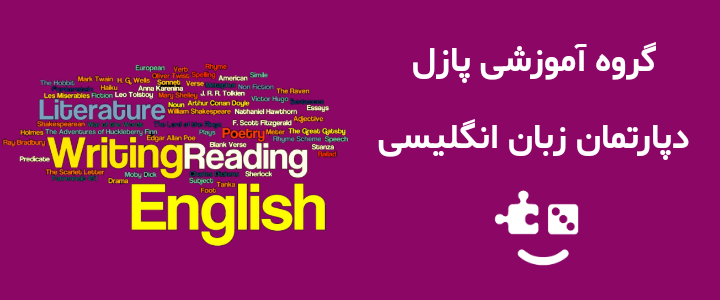
My Village
معنی صفحه 48 (conversation)
* Listen to Sam and Hamid talking about a village.
Sam: Where are you from, Hamid?
سَم: حمید اهل کجا هستی؟
Hamid: Ghez-ghal’eh.
حمید: قزقلعه
Sam: Where is it?
سَم: کجاست؟
Hamid: It’s a village in West Azarbaijan, near the city of Khoy.
حمید: یک روستا در آذربایجان غربی، نزدیک شهر خوی.
Sam: What’s it like?
سَم: چطور جایی است؟
Hamid: It’s a mountain village with many trees and flowers. It’s famous for its sunflower fields.
حمید:یک روستای کوهستانی است با درختها و گلهای بسیار زیاد. برای دشت های گلهای آفتابگردانش معروف است.
Sam: What’s the people’s job?
سَم: شغل مردم چیست؟
Hamid: They work on farms and raise animals.
حمید: آنها در مزارع کار می کنند و حیوانات را پرورش می دهند.
Sam: What about the weather?
سَم: آب و هوا چطور؟
Hamid: There’s a lot of wind in summer, fall and winter. It’s very cold from Aban to Farvardin.
حمید: در تابستان، پاییز و زمستان بادهای بسیار زیادی دارد. از آبان تا فروردین بسیار سرد است.
Sam: It sounds to be a very interesting place.
سَم: به نظر جای بسیار جالبی است.
معنی صفحه 49 (practice 1)
* Listen to the examples. Then ask and answer with a friend.
What is Ghez-ghal’eh like?
قزقلعه چطور جایی است؟
It’s a mountain village.
یک روستای کوهستانی است.
Is it near the city?
آیا نزدیک شهر است؟
Yes, it is./ No, it isn’t.
بله هست/ نه نیست.
What is it famous for?
برای چه معروف است؟
It’s famous for its sunflower fields.
برای مزارع آفتابگردانش معروف است.
What’s the people’s job?
شغل مردم چیست؟
They work on farms and raise animals.
آنها در مزارع کار می کنند و حیوانات را پرورش می دهند.
معنی صفحه 49 (practice 2)
* Listen to the examples. Then ask and answer with a friend.
Are there any fields?
Yes, there are.
آیا دشت دارد؟
بله دارد
Is there a river?
No, there isn’t.
آیا رودخانه دارد؟
نه ندارد
Is there a mountain?
Yes, there is.
آیا کوه دارد؟
بله دارد
Are there many people in the village?
No, there aren’t.
آیا مردم زیادی در روستا هستند؟
نه اینطور نیست
معنی صفحه 49 (practice 3)
* Listen to the examples. Then ask and answer with a friend.
What’s the weather like in Ghez-ghal’eh?
هوا در قزقلعه چطور است؟
It’s windy/sunny/rainy/snowy in summer.
در تابستان بادی/ آفتابی/بارانی/برفی است
What about the weather?
آب و هوا چطور؟
It’s hot/cold/warm/wet/dry.
خیلی گرم/خنک/گرم/مرطوب/خشک است.
Is it cold in winter?
آیا در زمستان خنک است؟
Yes, it is./ No, it isn’t.
بله درست است/ نه اینطور نیست.
Is there much rain in spring?
آیا در بهار باران زیادی می بارد؟
Yes, there is./ No, there isn’t.
بله درست است/ نه اینطور نیست.
معنی صفحه 51 (spelling and prounciation)
Student : Can you help me, madam?
دانش آموز: خانم می توانید به من کمک کنید؟
Teacher : Yes, what’s the problem?
معلم: بله مشکل چیست؟
Student: How do you say T-H? Is it the same in all words?
دانش آموز: چطور شما T-H را تلفظ می کنید؟ آیا در همه کلمات یکسان است؟
Teacher : No, it’s sometimes different.
معلم: نه گاهی متفاوت است.
Student : Can you give me some examples?
دانش آموز: می توانید چند مثال برای من بزنید؟
Teacher: Yes, in ‘there’, ‘this’, and ‘they’, it’s /ð/. In ‘north’, ‘south’, ‘thank’, and ‘three’, it’s /θ/.
معلم: بله در “there”، “this” و “they”، صدای آن /ð/ است. در ‘north’, ‘south’, ‘thank’, و ‘three’ صدای آن /θ/ است.
Student : Thank you.
دانش آموز: متشکرم
پاسخ صفحه 52 (Listening and Writing)
Listen to the conversations and fill out the table below.
| What’s the Weather Like | What is it Like | Conversations |
| wet | beautiful old houses | 1 |
| cold and dry in winter | a mountain village | 2 |